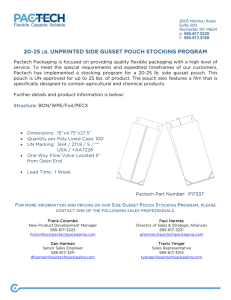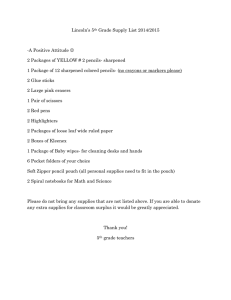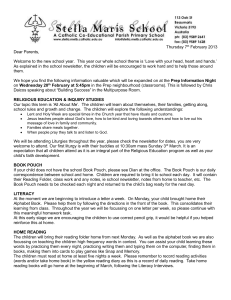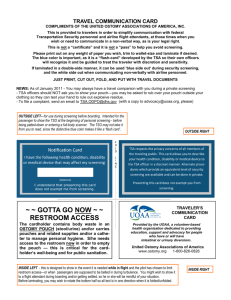Continent Cutaneous Pouch (CCP or Indiana Pouch)
advertisement
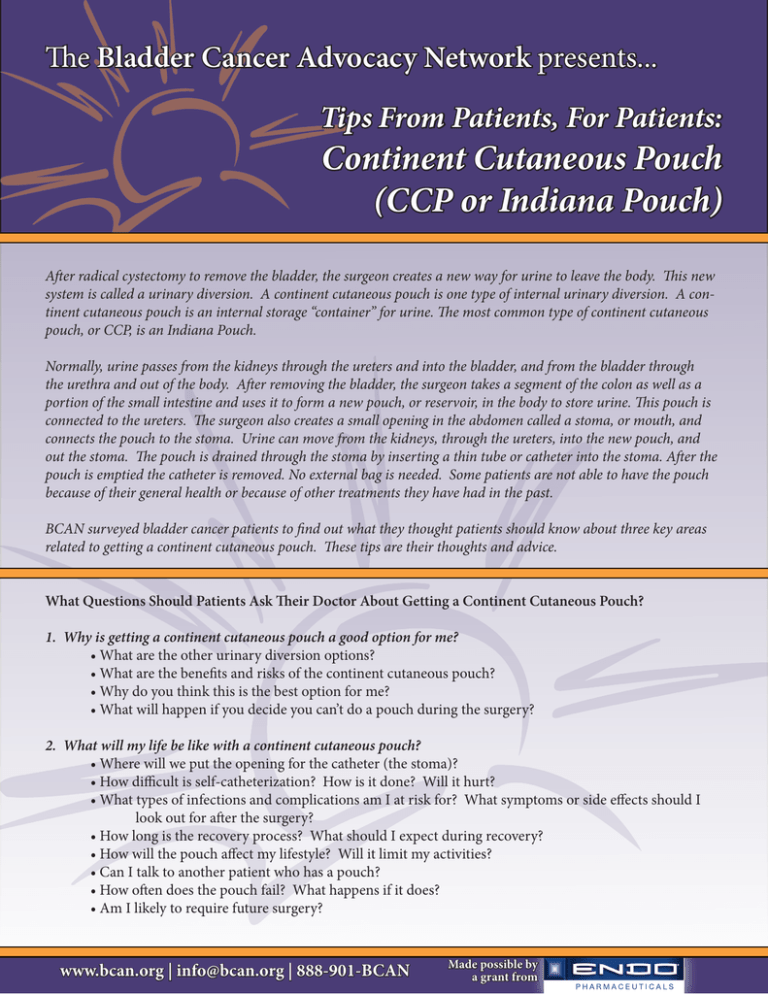
The Bladder Cancer Advocacy Network presents... Tips From Patients, For Patients: Continent Cutaneous Pouch (CCP or Indiana Pouch) After radical cystectomy to remove the bladder, the surgeon creates a new way for urine to leave the body. This new system is called a urinary diversion. A continent cutaneous pouch is one type of internal urinary diversion. A continent cutaneous pouch is an internal storage “container” for urine. The most common type of continent cutaneous pouch, or CCP, is an Indiana Pouch. Normally, urine passes from the kidneys through the ureters and into the bladder, and from the bladder through the urethra and out of the body. After removing the bladder, the surgeon takes a segment of the colon as well as a portion of the small intestine and uses it to form a new pouch, or reservoir, in the body to store urine. This pouch is connected to the ureters. The surgeon also creates a small opening in the abdomen called a stoma, or mouth, and connects the pouch to the stoma. Urine can move from the kidneys, through the ureters, into the new pouch, and out the stoma. The pouch is drained through the stoma by inserting a thin tube or catheter into the stoma. After the pouch is emptied the catheter is removed. No external bag is needed. Some patients are not able to have the pouch because of their general health or because of other treatments they have had in the past. BCAN surveyed bladder cancer patients to find out what they thought patients should know about three key areas related to getting a continent cutaneous pouch. These tips are their thoughts and advice. What Questions Should Patients Ask Their Doctor About Getting a Continent Cutaneous Pouch? 1. Why is getting a continent cutaneous pouch a good option for me? • What are the other urinary diversion options? • What are the benefits and risks of the continent cutaneous pouch? • Why do you think this is the best option for me? • What will happen if you decide you can’t do a pouch during the surgery? 2. What will my life be like with a continent cutaneous pouch? • Where will we put the opening for the catheter (the stoma)? • How difficult is self-catheterization? How is it done? Will it hurt? • What types of infections and complications am I at risk for? What symptoms or side effects should I look out for after the surgery? • How long is the recovery process? What should I expect during recovery? • How will the pouch affect my lifestyle? Will it limit my activities? • Can I talk to another patient who has a pouch? • How often does the pouch fail? What happens if it does? • Am I likely to require future surgery? www.bcan.org | info@bcan.org | 888-901-BCAN Made possible by a grant from 3. What is your experience with this treatment? • How many radical cystectomies have you done? How many of those have involved CCPs? • Where can I go to get a second opinion? What are the Most Important Things Patients Should Know About Getting a Continent Cutaneous Pouch? 1. Be prepared to catheterize! • Bring a mobile kit with you so you can catheterize and drain the pouch whenever you need to. • Make a schedule to drain your pouch at specific intervals, even at night, and be patient when draining. • Lubricant can make inserting a catheter easier. 2. With care, you can avoid a lot of problems. • Drink plenty of water. The pouch produces mucous, since it used to be a piece of intestine, and the mucous can build up. If you drink lots of water, it dilutes the mucous. • Leaks will still happen sometimes, so have a plan for what you will do in case of a leak. You might want to have a backup shirt at work or in your car. • When you travel, check to see where the bathrooms are. 3. People are there to help you. • An ostomy nurse can help you decide where you want the stoma to be and give you advice on what ostomy supplies you might want to try, for instance tape to seal the stoma. An ostomy is a surgically created hole that lets waste leave the body, and ostomy nurses specialize in helping patients with ostomies. The stoma created for the continent cutaneous pouch is one type of ostomy. • Ostomy manufacturers will send you samples of supplies so that you can try them out and see which ones you like best. What are your Top Tips for Coping With a Continent Cutaneous Pouch? 1. You can live a healthy, active life with a Continent cutaneous pouch! • The pouch is comfortable, and you’ll get used to emptying it. • Explain as much about your pouch as you want to family and friends, and ask them for help when you need it. • It can be helpful to talk to someone who already has the pouch. Your doctor might be able to connect you with someone, or you can find someone through BCAN. 2. Be aware of what might happen next. • You will still need regular checkups to make sure the cancer has not spread. • Your doctor may recommend chemotherapy to help prevent the cancer from spreading. BCAN provides this information as a service. Publication of this information is not intended to take the place of medical care or the advice of your doctor. BCAN strongly suggests consulting your doctor or other health professional about the information presented. www.bcan.org | info@bcan.org | 888-901-BCAN Made possible by www.bcan.org | info@bcan.org | 888-901-BCAN a grant from
